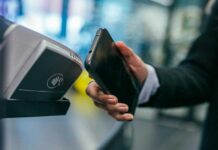Union Bank of the Philippines (UnionBank) continues to process a growing number of digital transactions and remains business-as-usual (BAU), throughout the ECQ.
For the month of March, UnionBank logged a nearly 160% in daily sign-ups to its online and mobile banking portals, and enabled more than 500,000 credit card transactions and well over 1 million Instapay and PesoNet fund transfer transactions. Importantly, the bank waived all its fees on InstaPay and PesoNet since the start of the ECQ and has extended this to April 30.
Most significantly, UnionBank also registered a tremendous surge in new accounts opened “100% digitally” through the UnionBank Online platform, as this was 2700X higher than year-ago levels.
UnionBank logoThese robust figures come amid reports from several consumer monitoring groups that the behavior of banking customers may be changing, preferring to use digital channels during the lockdown.
UnionBank president and CEO Edwin Bautista said the corona virus crisis could be the turning point in customers’ shift-to-digital – to safely access their funds, do transfer, make payments and apply for credit.
“This represents a tremendous new opportunity for banking in the country as this should reduce the number of Filipinos who remain unbanked. As this happens, we at UnionBank are fully prepared with the digital infrastructure already in place to offer full banking services to more people, more conveniently and more cost-effectively,” Bautista said.
Along with its digital platforms that enable the public to bank from home, UnionBank also rolled out its 5G-enabled mobile van called 5G-Bank On Wheels (5G-BOW) to serve people’s banking needs during the ECQ.
With its 5G-BOW clients can withdraw, pay bills, transfer funds, open an account and do balance-inquiries with faster, more robust bandwidth and internet connections, powered by its unique 5G technology.
In terms of its brick-and-mortar branches, UnionBank was able to keep 94% of its branches open, outside of those in medical quarantine and local lockdown areas; while safely keeping close to 90% of employees working from home in compliance with government guidelines.





















